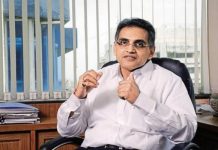Each of an estimated 2.1 million Indians infected with the human immunodeficiency virus (HIV) should be getting a cocktail of drugs to prolong their lives and reduce infections, but no more than 44% do, the minister of health told the Lok Sabha (parliament’s lower house) in April 2016.
In India, the drug cocktail is given to patients with a count of less than 350 CD4 cells per mm3 of blood–CD4 cells are white blood cells, a count of which indicates the health of a person’s immune system.
The health ministry said 940,000 (70%) of 1.3 million HIV-infected patients with a CD4 count less than 350 are on anti-retroviral therapy (ART). The situation is worse among children, with no more than 36% getting ART.
ART are drugs that–when taken in combination–can stop the HIV virus from growing, slowing the disease. They do not kill or cure the virus.
A World Health Organization (WHO) guideline says everyone with HIV should get anti-retroviral (ART) drugs, regardless of their clinical stage and a white-blood-cell tally that India uses to determine who will be treated.
An early start to ART is associated with reduced mortality, morbidity and HIV transmission outcomes, according to the WHO.
India has fewer HIV cases than only South Africa and Nigeria. In South Africa, 48% of HIV patients get ART, in Nigeria 24%, according to 2016 data from UNAIDS, a United Nations programme on HIV/AIDS.
The evidence also suggests that “untreated HIV infection may be associated with the development of several non-AIDS defining conditions (including cardiovascular disease, kidney disease, liver disease, several types of cancer and neurocognitive disorders) and that initiating ART earlier reduces such events and improves survivals”, according to the WHO.
Chances of getting these diseases fell 57% among HIV-positive patients treated early, according to a study called the Strategic Timing of Antiretroviral Treatment, conducted among more than 4,500 people across 35 different countries, between 2011 and 2016, by the International Network for Strategic Initiatives in Global HIV Trials, a US-government-funded research organisation.
Each of an estimated 2.1 million Indians infected with the human immunodeficiency virus (HIV) should be getting a cocktail of drugs to prolong their lives and reduce infections, but no more than 44% do, the minister of health told the Lok Sabha (parliament’s lower house) in April 2016.
In India, the drug cocktail is given to patients with a count of less than 350 CD4 cells per mm3 of blood–CD4 cells are white blood cells, a count of which indicates the health of a person’s immune system.
The health ministry said 940,000 (70%) of 1.3 million HIV-infected patients with a CD4 count less than 350 are on anti-retroviral therapy (ART). The situation is worse among children, with no more than 36% getting ART.
ART are drugs that–when taken in combination–can stop the HIV virus from growing, slowing the disease. They do not kill or cure the virus.
A World Health Organization (WHO) guideline says everyone with HIV should get anti-retroviral (ART) drugs, regardless of their clinical stage and a white-blood-cell tally that India uses to determine who will be treated.
An early start to ART is associated with reduced mortality, morbidity and HIV transmission outcomes, according to the WHO.
India has fewer HIV cases than only South Africa and Nigeria. In South Africa, 48% of HIV patients get ART, in Nigeria 24%, according to 2016 data from UNAIDS, a United Nations programme on HIV/AIDS.
The evidence also suggests that “untreated HIV infection may be associated with the development of several non-AIDS defining conditions (including cardiovascular disease, kidney disease, liver disease, several types of cancer and neurocognitive disorders) and that initiating ART earlier reduces such events and improves survivals”, according to the WHO.
Chances of getting these diseases fell 57% among HIV-positive patients treated early, according to a study called the Strategic Timing of Antiretroviral Treatment, conducted among more than 4,500 people across 35 different countries, between 2011 and 2016, by the International Network for Strategic Initiatives in Global HIV Trials, a US-government-funded research organisation.
Chandigarh has 146% of HIV-AIDS patients on ART–many of whom likely to be from the adjoining Haryana, the state with the lowest ratio of HIV population to ART centres, thus explaining the 146% figure–followed by Meghalaya with 82% and Mizoram with 73%, according to 2016 government data.
At the bottom is Tripura with 2%, preceded by Sikkim and Arunachal Pradesh with 14%,
There are 455 ART centres nationwide, according to the same government data. Maharashtra leads with 68 centres, followed by Karnataka with 63, Andhra Pradesh with 55 and Tamil Nadu with 51.
Each ART centre in Arunachal Pradesh and Sikkim caters to less than 1,000 HIV-positive patients; Haryana has a centre for every 22,500 patients. There is an ART centre for every 4,552 HIV-positive patients in India.
From IndiaSpend, Feature image courtesy huffpost.com



























